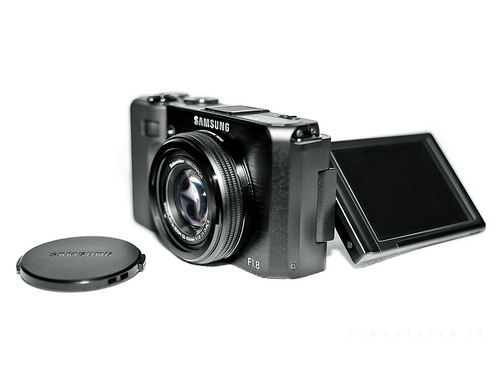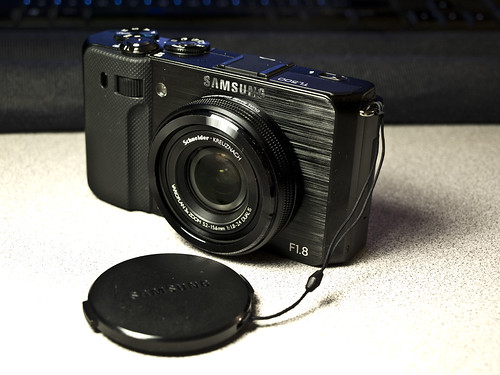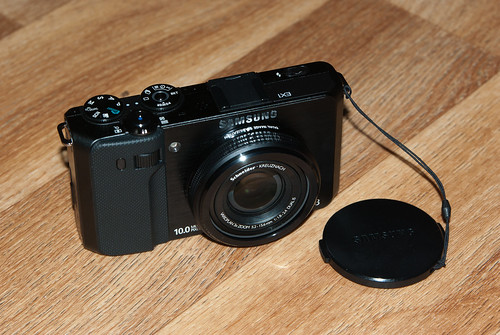Difference between revisions of "Samsung TL500/EX1"
m |
Hanskerensky (talk | contribs) (Added link to user manual page) |
||
| (9 intermediate revisions by 4 users not shown) | |||
| Line 1: | Line 1: | ||
| − | {{ | + | {|class=floatright |
| + | | | ||
| + | {{Flickr_image | ||
| + | |image_source= http://www.flickr.com/photos/35777276@N00/5469929481/in/pool-camerawiki | ||
| + | |image= http://farm6.static.flickr.com/5015/5469929481_b66041a03c.jpg | ||
| + | |image_align= right | ||
| + | |image_text= Prominent "F1.8" branding | ||
| + | |image_by= mrcursed | ||
| + | |image_rights= wp | ||
| + | }} | ||
| + | |- | ||
| + | | | ||
| + | {{Flickr_image | ||
| + | |image_source= http://www.flickr.com/photos/yabon_gorky/4983229773/in/pool-camerawiki | ||
| + | |image= http://farm5.static.flickr.com/4113/4983229773_f45a50f80c.jpg | ||
| + | |image_align= right | ||
| + | |image_text= | ||
| + | |image_by= Yabon_Gorky | ||
| + | |image_rights= with permission | ||
| + | }} | ||
| + | |} | ||
| + | By 2010, Korean industrial giant [[Samsung]] had made several attempts to find a viable niche in the digital camera marketplace. But two camera introductions in that year earned the company new credibility among serious photographers: The [[Samsung NX10]] mirrorless system camera; and the '''TL500''', known as the '''EX1''' outside North America. | ||
| − | + | The TL500 combined the virtues of several competing "serious compact" digital models: The tilt-swivel display, stout metal build, and traditionalist knurled control dials echo the [[Canon PowerShot G11|Canon G-series]]; and its lens, offering 24mm ([[35mm equivalent|equivalent]]) wideangle coverage and a [[Lens#Lens_Speed|bright]] f/1.8 aperture, matched the [[Panasonic DMC-LX5]]. As with [[Panasonic]]'s licensing agreement with [[Leica]] for lens branding, Samsung partnered with the equally-venerable [[Schneider]] to lend prestige to the included lens. And the option of raw capture, practically mandatory for "serious" photographer cred, naturally was included. | |
| − | + | But Samsung was also able to draw on its huge resources as a semiconductor manufacturer, being one of the few companies besides [[Sony]] and [[Canon]] able to fabricate its own [[sensor]] chips in-house. Hence the TL500 also included a cutting-edge [[OLED|AMOLED]] viewing screen (Active-matrix organic light emitting diode), billed as brighter and giving a wider viewing angle than conventional LCDs. | |
| − | + | Critical reception for the TL500 was generally respectful. There were a few complaints about the absence of HD video recording, a zoom range that stopped at 72mm [[35mm equivalent|equivalent]]; and high-ISO performance that was not quite at the class-leading standard of cameras like Canon's [[Canon PowerShot S90|S90]]. | |
| − | |||
| − | Critical reception for the TL500 was generally respectful. There were a few complaints about the absence of HD video recording, a zoom range that stopped at | ||
==Links== | ==Links== | ||
| + | *[https://www.manualslib.com/manual/261465/Samsung-Tl500.html Samsung TL500 user manual] at [https://www.manualslib.com/ Manualslib] | ||
*[http://www.dpreview.com/reviews/samsungtl500/ Samsung TL500/EX1 review] at [http://www.dpreview.com/ DPReview.com] | *[http://www.dpreview.com/reviews/samsungtl500/ Samsung TL500/EX1 review] at [http://www.dpreview.com/ DPReview.com] | ||
| + | {{Flickr_image | ||
| + | |image_source= http://www.flickr.com/photos/johnofarch/5607517579/in/pool-camerawiki | ||
| + | |image= http://farm6.static.flickr.com/5028/5607517579_5f9a4683fc.jpg | ||
| + | |image_align= left | ||
| + | |image_text= Swivel [[OLED]] display | ||
| + | |image_by= John Henson Taghap | ||
| + | |image_rights= wp | ||
| + | }} | ||
| + | |||
| − | [[category:Digital]] [[category:Samsung|TL500]] | + | [[category:Digital]] |
| + | [[category:Samsung|TL500]] | ||
| + | [[Category: EISA]] | ||
| + | [[category:T|TL500 Samsung]] | ||
Latest revision as of 04:18, 7 June 2021
| ||
|
By 2010, Korean industrial giant Samsung had made several attempts to find a viable niche in the digital camera marketplace. But two camera introductions in that year earned the company new credibility among serious photographers: The Samsung NX10 mirrorless system camera; and the TL500, known as the EX1 outside North America.
The TL500 combined the virtues of several competing "serious compact" digital models: The tilt-swivel display, stout metal build, and traditionalist knurled control dials echo the Canon G-series; and its lens, offering 24mm (equivalent) wideangle coverage and a bright f/1.8 aperture, matched the Panasonic DMC-LX5. As with Panasonic's licensing agreement with Leica for lens branding, Samsung partnered with the equally-venerable Schneider to lend prestige to the included lens. And the option of raw capture, practically mandatory for "serious" photographer cred, naturally was included.
But Samsung was also able to draw on its huge resources as a semiconductor manufacturer, being one of the few companies besides Sony and Canon able to fabricate its own sensor chips in-house. Hence the TL500 also included a cutting-edge AMOLED viewing screen (Active-matrix organic light emitting diode), billed as brighter and giving a wider viewing angle than conventional LCDs.
Critical reception for the TL500 was generally respectful. There were a few complaints about the absence of HD video recording, a zoom range that stopped at 72mm equivalent; and high-ISO performance that was not quite at the class-leading standard of cameras like Canon's S90.
Links

|
| Swivel OLED display image by John Henson Taghap (Image rights) |

